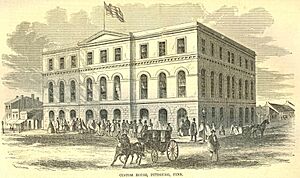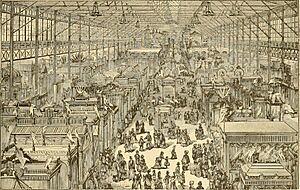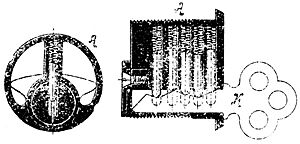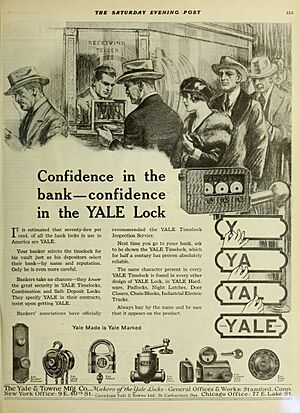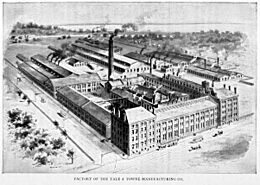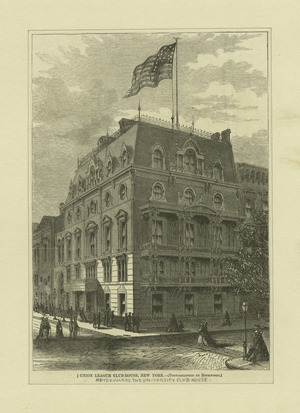Linus Yale Jr. facts for kids
Quick facts for kids
Linus Yale Jr.
|
|
|---|---|
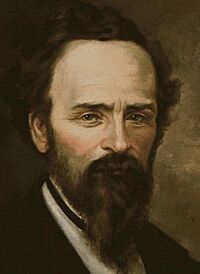
Inventor of the Pin-Tumbler Lock and founder of Yale Lock Co.
|
|
| Born | April 4, 1821 Salisbury, New York, U.S.
|
| Died | December 25, 1868 (aged 47) New York City, U.S.
|
| Burial place | Arms Cemetery, Shelburne Falls, Massachusetts |
| Occupation | Inventor, mechanical engineer, businessman |
| Known for | Yale Lock Yale Bank Lock Yale Chilling Iron Safes and Vaults Pin Tumbler Locks and Cylinder Locks |
| Spouse(s) | Catherine Brooks Yale |
| Children | John B. Yale Madeline Yale Wynne Julian L. Yale |
| Parent(s) | Linus Yale Sr. Chlotilda Hopson Yale |
| Family | Yale |
| Awards | National Inventors Hall of Fame |
| Notes | |
|
Yale Genealogy and History of Wales
|
|
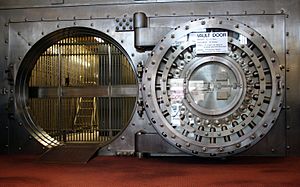
Linus Yale Jr. (born April 4, 1821 – died December 25, 1868) was an American engineer and inventor. He helped start the Yale Lock Company, which became a top lock maker in the United States.
He was known as the best expert on bank locks. By the early 1900s, most banks in America used his special locks. He is most famous for inventing new types of locks, especially the cylinder lock. His basic lock design is still used everywhere today, in most personal locks and safes.
Contents
Linus Yale Jr.'s Life Story
Early Life and Family
Linus Yale Jr. was born in Salisbury, New York. His family was related to Elihu Yale, who helped create the famous Yale University. The Yale family in America all came from the same ancestor, Thomas Yale. Thomas Yale was the stepson of Governor Theophilus Eaton.
Linus's father, Linus Yale Sr., opened a lock shop in the 1840s. His shop was in Newport, New York. He was a successful inventor who made expensive, handmade bank locks. He had many patents for locks and other machines.
Starting His Career
After finishing school, Linus Yale Jr. joined his father's business. He soon created new and improved locks. These locks used special turning parts called permutations and cylinders.
In 1857, he started the Yale & Greenleaf Lock Co. with his future brother-in-law, Congressman Halbert S. Greenleaf. Greenleaf also helped pay for the new company. Linus's father passed away in 1858. After that, Linus Yale Jr. became even more involved in the family lock business.
Around 1860, Yale opened his own shop in Shelburne Falls, Massachusetts. He focused on making special locks for banks. Later, he started another company with a wealthy man named Henry Robinson Towne. This company was called the Yale Lock Manufacturing Company. It was located in Stamford, Connecticut.
Throughout his career, Yale got many patents for his inventions. People praised his products for being very good and secure.
Linus Yale Jr.'s Inventions
From Art to Locks
When he was young, Linus Yale Jr. loved to paint portraits. But around 1850, he decided to help his father improve bank locks. He wanted to solve mechanical problems. Luckily, his drawing skills were very useful. His plans for new lock designs were always clear and detailed.
How His Locks Worked
In the 1860s, Yale focused on bank locks. He created new combination safe locks and key-operated cylinder locks. These were much better than older locks. Yale was very skilled at making locks. He invented one of the first modern locks that used a "pin-tumbler" design.
The pin-tumbler design is also called the cylinder design. It is still used in most locks and safes today. Yale had thought about this idea for many years, even sketching it in 1844. He believed that traditional locks with keyholes were easy for thieves to pick or break. This led him to create "combination locks" that used permanent dials and shafts. Yale's most famous lock, the cylinder pin-tumbler lock, used an idea first seen in ancient Egypt over 4,000 years ago.
Yale's inventions were very successful. He showed his lock designs at big world's fairs in the United States and other countries. He won many awards at these shows.
He received many patents for his inventions, mostly for locks and safes. For example, in 1858, he patented a tool for adjusting a carpenter's square. In 1865, he patented a tool for reversing screw-taps. In 1868, he got two patents for improvements in tools called mechanics' vises.
Key Inventions
Yale had many inventions that changed the lock industry. They made financial institutions much safer. He used ideas from large wooden locks built by ancient Egyptians.
- In 1851, he patented a pin tumbler lock for banks.
- In 1863, he patented his pin tumbler lock for doors.
- In 1865, he patented the pin tumbler padlock, which is still widely used today. Yale's padlock was smaller, stronger, and more reliable than others at the time.
Yale Bank Lock
In 1851, Yale invented what he called the "Yale Magic Infallible Bank Lock." This lock was for safes and bank vaults. Owners could change its combination. The key could also secure the lock while being hidden behind a strong steel plate.
Yale said his bank lock had nine special features:
- It had no springs, so it wouldn't fail from fire, dampness, or neglect.
- The lock's head was separate from the key parts, making it very hard to pick.
- When the key was removed, no trace was left for someone to make a copy.
- It was "powder proof," meaning no gunpowder could be put into the lock.
- It was a "permutation lock," so new key combinations could be set.
- If a key was lost, a new key could be made. After changing the lock's setup, the lost key would no longer work.
- The key was easy to carry, which was a big advantage over older bank locks.
- The lock worked only by hand movements, not by things like dirt or rust.
- It was made by top machinists, so it was very reliable.
Other Important Locks
- Yale Safe Lock
Yale's second big invention came around 1863. He called it "Yale's Magic Infallible Safe/Door Lock." This lock had many great features like the Yale Bank Lock. It was made for fire-proof safes and cash doors. It also had no springs and was safe from powder, dampness, fire, and thieves. Each lock was unique, and no two could be opened with the same key. Also, the key had to be taken out before the bolt could be unlocked. This stopped people from accidentally leaving the key in the lock.
- Yale Chilled Iron Vaults and Safes
Another important invention by Yale was his Chilled Iron Bank Doors and Vaults. Before Yale, bank doors and safes often had hard metal plates behind soft iron. These could be broken with enough force. Yale used a strong, woven pattern of soft, tough iron instead. He put this inside the metal covering of the vaults. This made the corners and surfaces incredibly strong and almost impossible to break.
The Yale Manufacturing Company
In 1868, Yale and Henry R. Towne started the Yale Lock Manufacturing Company. It was in Stamford, Connecticut, and made cylinder locks.
Thanks to Yale's clever ideas and his efforts to promote them, Yale Locks quickly became popular. Many large companies in the United States started using them. Yale showed how weak other locks were and how his locks were better. He even did live demonstrations for business leaders and government officials. He showed them how he could easily pick the locks they were using. Because of these demonstrations and the high quality of Yale's locks, his company grew very fast. The company's name later changed to The Yale and Towne Manufacturing Company. It eventually became part of NACCO Industries.
- Cracking the Hobbs Lock
At the time, the most popular bank locks were the Hobbs or Newell locks. To show that his locks were better, Yale contacted important bankers. He set up a live demonstration where he successfully picked a Hobbs Lock. One banker, Samuel Hammond, said that Yale "proved that the Hobbs lock is able to be picked and demonstrated it using a fake wooden key that he made."
- Challenge to the World
As part of his business plan, Yale offered a challenge to anyone who dared to pick his bank locks. He offered a $3,000 reward (a very large amount of money back then) if anyone could successfully pick his locks.
Linus Yale Jr.'s Family
Linus Yale Jr. married Catherine Brooks. She came from an important family in New England. Catherine was known for her work in the abolitionist movement in Philadelphia. She was a teacher at a school run by abolitionist Theodore Dwight Weld. Her father, John Brooks, was a doctor and a member of the Legislature. Catherine's favorite teacher was the famous writer Ralph Waldo Emerson. Her half-sister, Jean Brooks Greenleaf, was married to Congressman Halbert S. Greenleaf. Jean was also elected President of the New York State Women's Suffrage Association.
Linus and Catherine had three children:
- John B. Yale (1845−1904): He joined the Union League. He married Marie Louise McCulloch, whose father was the U.S. Secretary of Treasury, Hugh McCulloch. Hugh McCulloch helped pay for the American Civil War under Abraham Lincoln. John B. Yale was also the Treasurer of the Yale Lock Company. He helped grow the company with Henry R. Towne into a global business. It had 12,000 workers and sold products in over 120 countries.
- Madeline Yale (1847−1918): She was an artist and helped others through charity. She married Senator Henry Winn.
- Julian L. Yale (1848−1909): He owned and was president of Julian L. Yale & Co., a railway supply business. He introduced the Shelby Steel Tube to the railway market. He was also a member of several important clubs.
Linus was also a distant cousin of Governor Elihu Yale of Yale University, media businessman Moses Yale Beach, and Canadian fur trader James Murray Yale. His nephew was architect Merton Yale Cady.
Linus Yale Jr.'s Patents
- May 6, 1851 U.S. Patent 8,071 — Newport, New York
- October 19, 1852 U.S. Patent 9,350 — Newport, New York
- December 21, 1852 U.S. Patent 9,497 — Newport, New York
- July 12, 1853 U.S. Patent 9,850 — Newport, New York
- June 3, 1856 U.S. Patent 15,031 — Newport, New York
- October 19, 1858 U.S. Patent 21,861 — Philadelphia, Pennsylvania
- November 9, 1858 U.S. Patent 22,048 — Philadelphia, Pennsylvania
- June 12, 1860 U.S. Patent 28,710 — Philadelphia, Pennsylvania
- January 29, 1861 U.S. Patent 31,278 — Philadelphia, Pennsylvania (Locks or fastenings for special use for drawers)
- May 14, 1861 U.S. Patent 32,331 — Philadelphia, Pennsylvania (Locks for use with special keys or a plurality of keys; keys therefor the key being a card, e.g. perforated, or the like)
- June 27, 1865 U.S. Patent 48,475 — Shelburne Falls, Massachusetts (Cylinder locks and other locks with tumbler pins which are set by pushing the key in)
- June 27, 1865 U.S. Patent 48,476 — Shelburne Falls, Massachusetts (Driving main working members rotary shafts, e.g. working-spindles)
- February 6, 1866 U.S. Patent 52,484 — Shelburne Falls, Massachusetts
- November 19, 1867 U.S. Patent 71,110 — Shelburne Falls, Massachusetts
- January 7, 1868 U.S. Patent 73,152 — Cooperstown, New York
- February 4, 1868 U.S. Patent 74,025 — Shelburne Falls, Massachusetts
- September 15, 1868 U.S. Patent 82,192 — Shelburne Falls, Massachusetts
- January 4, 1870 U.S. Patent 98,536 — Shelburne Falls, Massachusetts
- September 19, 1871 U.S. Patent 119,212 — Shelburne Falls, Massachusetts
- October 24, 1871 U.S. Patent 120,177 — Shelburne Falls, Massachusetts



